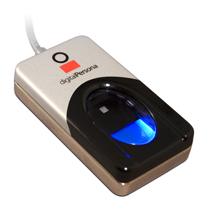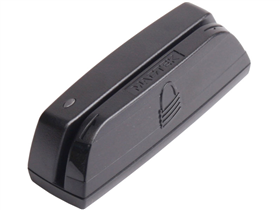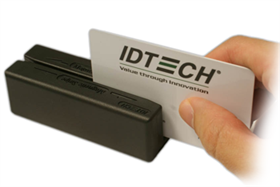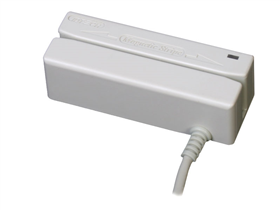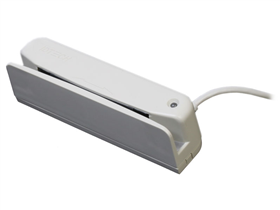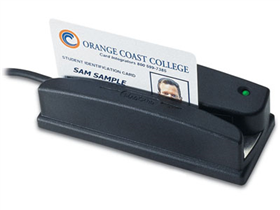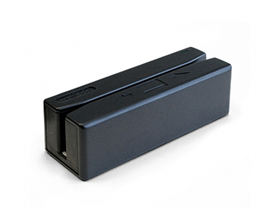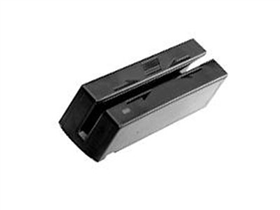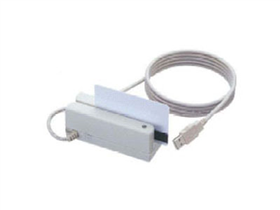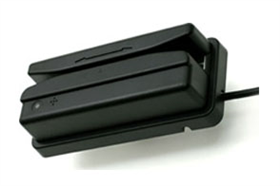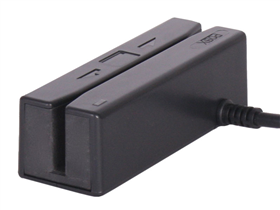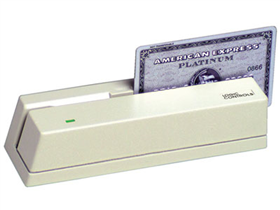A Magnetic Stripe Reader, also known as a magstripe reader, card reader, or MSR, is used to translate encoded data found on magnetic stripe cards. Usually they plug into your computer via USB interface, though there are also serial and PS/2 models available as well.
Magnetic stripe cards are more commonly seen as credit cards, customer loyalty cards, or gift cards. They have a strip of magnetic tape on the back, similar to what was used in VHS audio tapes. When you swipe the card through an MSR, the head translates the magnetic signal into the encoded data, then sends it on to your PC.
POSGuys.com carries a variety of readers to meet specific needs of various industries. The main differentiator between MSRs is how many tracks they can read. Most manufacturers offer 2-track or 3-track readers of their models, allowing businesses to only send the tracks they need. Credit card data is usually encoded on tracks 1 and 2, while track 3 can be used for services such as ID cards, gift cards, and more. If you don't know how many tracks you will need, it's a safe bet to buy a 3-track magnetic card reader.
A new addition to MSRs is hardware-based encryption. Traditionally, a card reader sends data as plain text, meaning you can swipe the card while a text editor is active and save all the data. This creates a very strong vector for potential fraud. Thankfully, newer card readers, including the Magtek Dynamag, can be programmed to encrypt the data before sending it to your computer. In this instance, they are programmed by card processor, who are the only ones who can decrypt the credit card data.
If your processor doesn't support encryption, or you plan on reading more than just credit cards, the POS-X XM95 is affordable, offers 3-track reading, and is compatible with OPOS/JPOS. For encryption, you can't go wrong with the MagTek Dynamag. We also have magnetic card readers compatible with iPhones and Android devices, in our Mobile Card Reader section.
